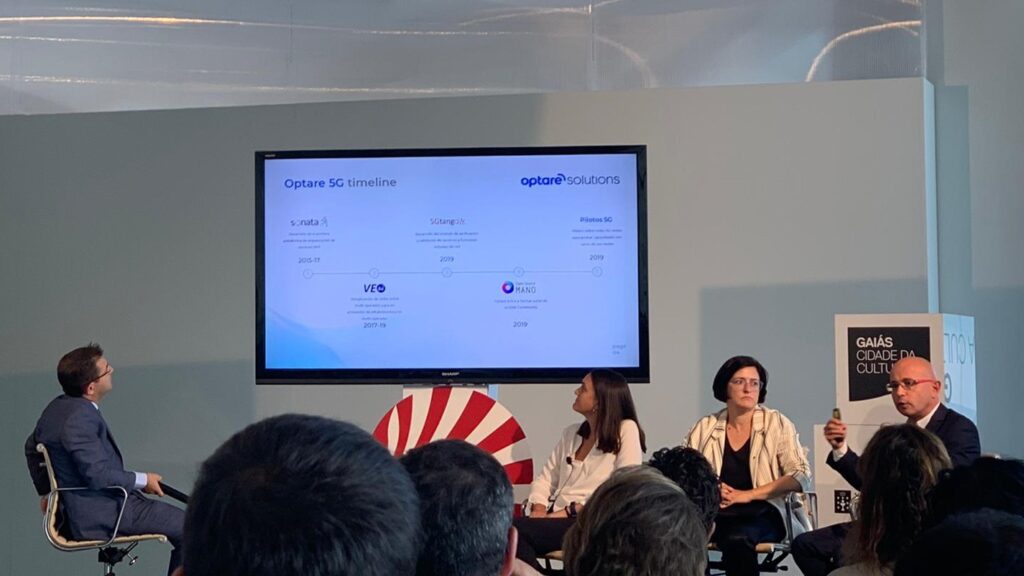Connected car smart communications as network bridge for isolated areas using 5G and Edge Computing
 Fernando Lamela | Solutions Architect flamela at optaresolutions.com |  Santiago Rodriguez | Software Architect srodriguez at optaresolutions.com |
The use case developed for the ETSI and Linux Foundation Edge Hackathon 2022 and presented at the Edge Developers Conference in San Jose (California), defines a set of connected vehicles that, with the support of 5G, MEC and artificial intelligence technologies, are able to capture information from the surrounding environment and feed a smart platform which can predict and/or to adopt several actions.
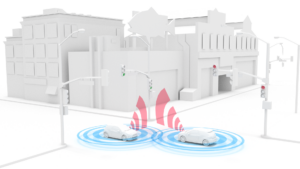 | 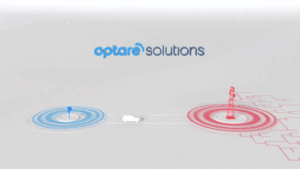 |
The environment has 4G and 5G coverage areas provided by operator radio nodes and supported by regular Edge. It also has a 5G restricted coverage area provided by autonomous and isolated nodes and MMTC Edge. The connected vehicle can act like a link between the smart platform edges and the isolated information sources from the MMTC nodes.
The information retrieved by the connected vehicles and sent to the platform, is collected from different sources:
- Camera: The vehicle is equipped with a camera that sends a video stream to the Edge operator over which is executed an AI inference algorithm to detect several patterns and generate information packages that are relevant to the smart platform.
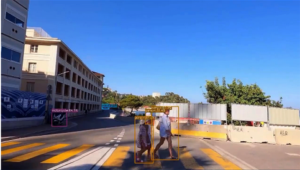

- Sensors: The vehicle is equipped with several sensors (temperature, humidity, …) that can create heat maps with this information to the smart platform.
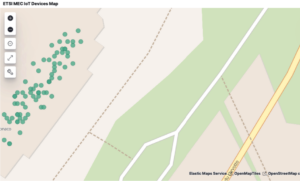
- MMTC edge services APIs: In regions/areas where the information sources are isolated (low power, low signal quality, bad coverage due maintenance, weather conditions, etc), the car can act like a link between the information source (different collection of IoT devices using MMTC Edge services) and the smart platform, uploading this information in the next available operator coverage area crossed by the car in its route.
Finally, in this scenario we define the integration with a gamification platform to allow that every information contribution to the smart platform could be rewarded with points that can be exchanged with prizes, like tax discounts or additions to virtual point wallets, for example, stimulating the participation of the people establishing missions with a different degree of value.
Every connected car where the application is installed, can be registered securely on the smart platform and provide several information about the environment having the capability to register as well to be used as a link with autonomous Edge services (MMTC nodes) to perform several maintenance operations automatically, without human intervention.
With this scenario, beyond the technological benefits provided by the uses of 5G networks, Edge services and AI applications that make possible the change of the application behavior using an event driven architecture and allowing a best use of the connectivity and compute resources (creating a dynamic environment) we can demonstrate that the solution provides other benefits like these ones:
- Users: Could be rewarded for the collected information, a collection process that does not suppose any work from user’s side (automatically performed by the connected car)
- Social: With all the retrieved information, some actions can be performed to optimizations and improvements in the cities, towns, roads, …
- Environmental: Maximize the use of the resources, e.g avoiding traffic density (pollution) or using wireless solutions (no new wired traditional networks required), as well as reducing operational costs.
- Industry: New components will be required in the connected vehicles and some operations could be run with low resources getting a tail benefit in the use of edge resources.
- Third parties: Other third party services can be included in the connected car ecosystem reporting benefits for service providers, cities, environments and final users.
The 5G and Edge Computing deployments follow different approaches trying to obtain the maximum benefit. Mostly this benefit is only measured in economic interests. So the deployment of the technology will support better urban areas or easy to connect rural and isolated zones.
These depopulated and isolated areas have few opportunities to advance and the inequalities are important. An autonomous MMTC Edge node (antenna with edge support) with a quick deployment without plugging connectivity or energy will be an innovative solution for these areas to support advanced digital services and reduce the gap among several areas, improving the digitalization opportunities for different verticals placed in those zones.
| Optare Solutions awarded by the 5GAA as the best automotive application during the Edge Developers ConferenceOptare Solutions proudly represented by Fernando Lamela and Santiago Rodriguez has been awarded by the 5GAA as the best automotive application during the 2022 EDGE Developers conference held in San Jose (California) |

Customer Loyalty and Retention in Telecom

Ayudas programa Principia 2020 de la Xunta de Galicia
